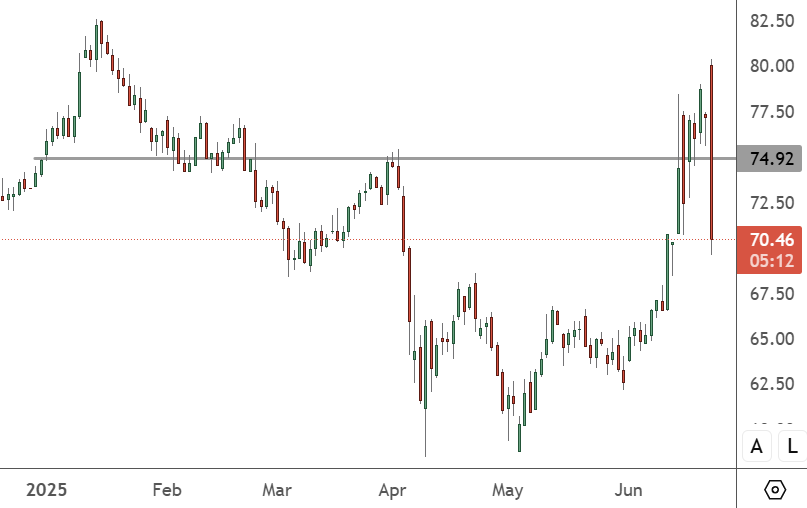Oil prices crashed on Tuesday after Iran’s retaliation on US air bases were seen as muted.

The price of Brent crude has crashed back to $70.45, erasing its year-to-date gains that were created and that can act as a resistance level now.
Global oil prices dropped sharply after Iran’s military response to US attacks failed to cause any fatalities or major damage. Investors are seeing it as a sign of weakness in the country’s potential to escalate the Middle East conflict.
Iran launched an attack on the Al-Udeid US Air Force base, located near Qatar. The base is used as the base for US air operations in the Middle East, and is home to 8,000 US troops and some UK forces.
Iran launched fourteen missiles at the base, but all were said to be intercepted by the United States.
Iran has also threatened to block the Strait of Hormuz crude waterway, but there have been no moves on that so far. Oil markets are now stepping back from the panic buying of last week.
Ahead of the Monday selling, Brent and WTI futures had seen month-over-month gains of over 20%, beating supply and demand fundamentals. If the situation with Iran cools, then the market is expecting those fundamentals to return.
Earlier in June, OPEC+ decided to raise its collective production levels for July by another 411,000 barrels per day. That was the third consecutive output hike of 411,000 bpd announced by the group.
That comes at a time when non-OPEC production remains elevated, with the United States pumping more than 13 million barrels per day. Brazil, Canada, Guyana, and Norway are also pumping more oil than they were last year.
Production at those levels may result in an oil market surplus due to the projections for global demand growth of less than 1 million bpd this year, according to the International Energy Agency.


